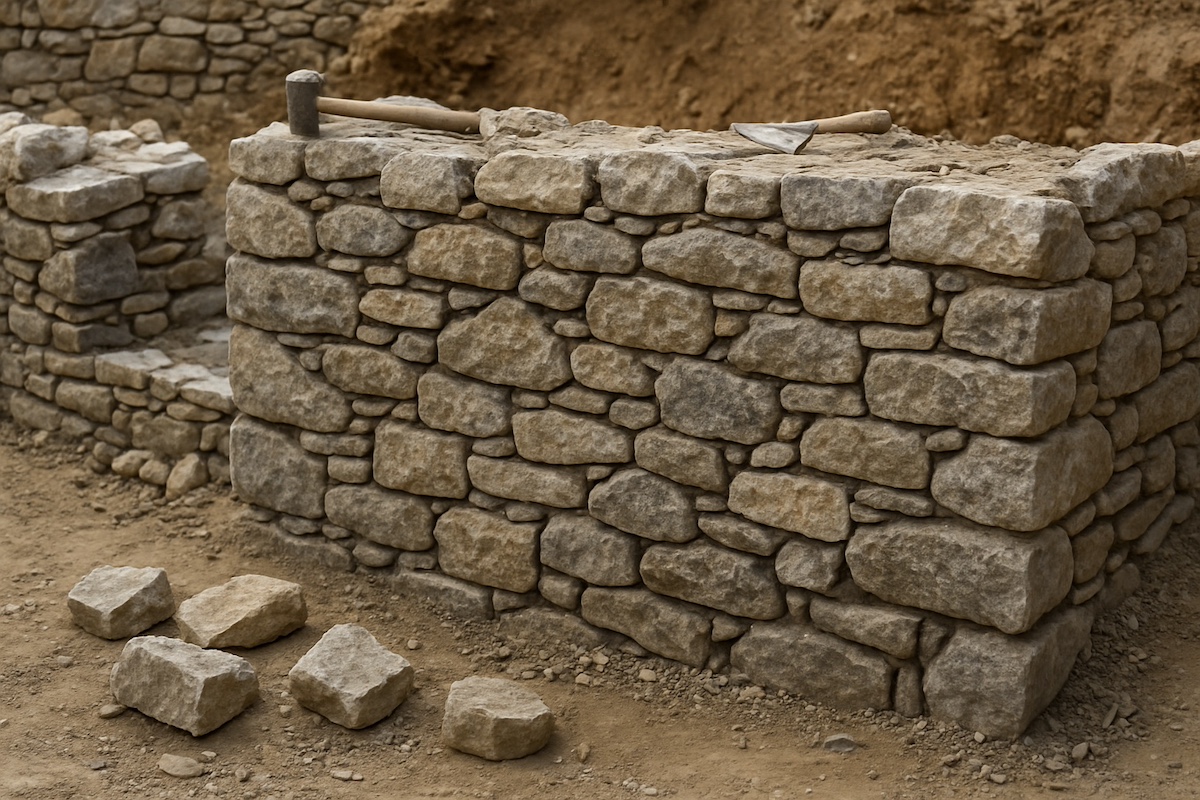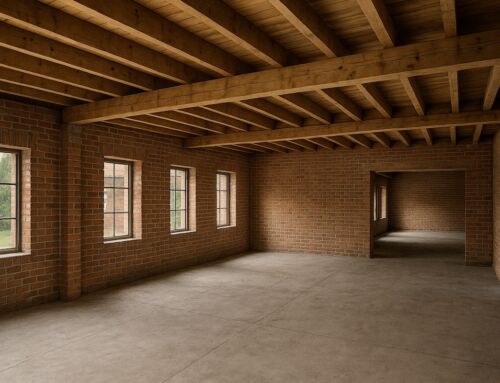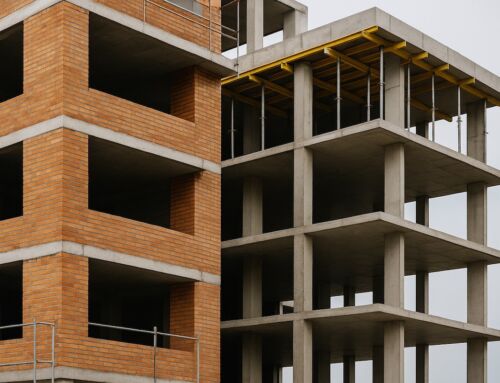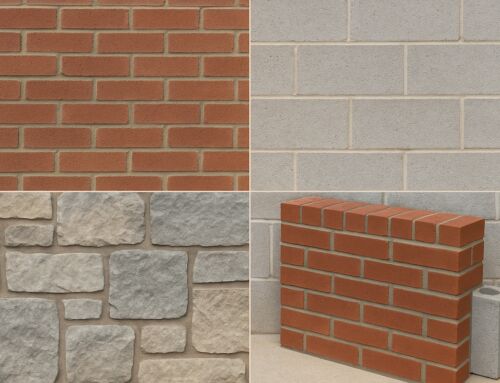Rubble Masonry: Types, Uses, and Construction Techniques Explained
Rubble masonry is a time-tested building technique that dates back thousands of years. From the stone walls of medieval castles to modern landscape designs, rubble masonry continues to be a popular choice in both historical restoration and new construction. Its appeal lies in its rugged aesthetics, structural reliability, and cost-effective use of natural stone.
In this guide, we’ll explore the meaning of rubble masonry, its different types, how it’s constructed, where it’s commonly used, and why it’s still relevant in today’s architectural landscape.
What is Rubble Masonry?
Rubble masonry refers to a style of stone construction where stones are used in their natural or roughly shaped forms. Unlike ashlar masonry, where each stone is precisely cut and dressed, rubble masonry uses irregular stones that are laid together with or without mortar.
This method allows builders to work with stones that are locally available and require minimal processing, making it an affordable and eco-friendly construction solution. The uneven shapes of the stones add a rustic charm to structures, which is particularly appreciated in rural homes, garden walls, and heritage buildings.
Depending on the construction technique and application, rubble masonry can be as simple as stacking stones without mortar or as complex as shaping stones to fit neatly within structured courses.
Types of Rubble Masonry
Rubble masonry can be classified into various types based on the dressing of the stones and how they’re laid. Each type offers distinct benefits and visual characteristics.
Random Rubble Masonry
This is the most basic and widely used form. Stones are laid in a random fashion without much regard for uniformity.
Uncoursed Random Rubble Masonry involves laying stones without attempting to align them in horizontal layers. This method is popular for boundary walls, agricultural buildings, and areas where appearance is less of a priority.
Coursed Random Rubble Masonry, on the other hand, involves arranging stones to achieve a rough alignment in horizontal courses. While the stones are still irregular, some effort is made to group them by height, giving a more organized appearance.
Square Rubble Masonry
In this type, the stones are roughly squared on all sides to create a more uniform structure.
First-Class Square Rubble Masonry uses stones that are well-dressed and laid with precision. The courses are uniform, and mortar joints are kept thin. This technique is typically used for prominent structures where appearance matters.
Second-Class Square Rubble Masonry uses less perfectly dressed stones. The result is still neat but allows for wider joints and less exact finishes, making it a practical choice for secondary walls or structures with a functional rather than decorative role.
Dry Rubble Masonry
Dry rubble masonry is constructed without any mortar. Stones are skillfully selected and placed so that they interlock and rely on gravity and friction for stability. This method requires significant craftsmanship but results in a breathable, flexible structure that adjusts to minor ground movements.
Dry rubble is often used in retaining walls and in areas with a high risk of moisture damage, since the absence of mortar allows for better drainage.
Polygonal Rubble Masonry
In this artistic variation, stones are shaped into polygonal forms and laid in a way that they fit together like pieces of a puzzle. The resulting surface has a unique interlocking pattern that’s both decorative and structurally sound. It’s commonly used in facades, monuments, or decorative garden elements where visual appeal is key.
Flint Rubble Masonry
Flint rubble masonry uses flint stones, which are hard, rounded, and often glossy. Flint is difficult to shape, so it’s usually embedded in mortar or used in combination with bricks or other stones to form visually distinct patterns. This type of masonry is traditionally found in certain regions of the UK and is typically seen in historic buildings and churches.
Construction Techniques for Rubble Masonry
Though it may appear informal or rustic, rubble masonry requires careful planning and execution. Here’s how professionals approach its construction.
Site and Material Preparation is the first step. Suitable stones are chosen based on size, durability, and appearance. Larger stones are set aside for corners and the base, while smaller ones are used for filling gaps. Mortar, if used, is typically made from a mix of cement, lime, and sand.
Laying the Stones starts with a strong foundation. The bottom layer uses the largest and flattest stones to form a solid base. Stones are then laid course by course, ensuring that each stone overlaps the joints below to distribute the load. Gaps between large stones are filled with smaller stones or chips for added stability.
Mortar joints are carefully pointed, not just for appearance but also to prevent water penetration. In dry rubble construction, extra attention is paid to fitting stones tightly together.
Tools and Equipment used in rubble masonry include masons’ hammers, chisels, trowels, plumb bobs, string lines, and levels. Safety gear like gloves, helmets, and goggles is also essential, especially when shaping stones or working on high walls.
Common Uses of Rubble Masonry
Rubble masonry has a wide range of applications due to its versatility and strength.
Foundation walls often use rubble because it offers excellent load-bearing capacity and resists settlement over time. Its irregular surface also helps bind well with mortar.
Retaining walls are another common use. Whether dry-laid or mortared, rubble masonry can effectively hold back soil and manage water flow on sloped terrain.
Boundary and garden walls built with rubble provide privacy, security, and a rustic visual charm that blends well with natural landscapes.
Piers and abutments in bridge construction frequently use rubble masonry for strength and resistance to water erosion.
Rural homes, barns, and sheds often incorporate rubble because of its low cost and easy access to raw materials. It’s also used in the restoration of heritage buildings, where maintaining the historical character is important.
Advantages and Disadvantages of Rubble Masonry
Advantages
- Cost-effective: It uses locally sourced stones, reducing material and transportation costs.
- Durable and weather-resistant: Properly built rubble structures can withstand extreme weather conditions.
- Aesthetically unique: Each wall has a natural, textured look that’s hard to replicate with machine-cut materials.
- Eco-friendly: Minimal processing means lower environmental impact.
Disadvantages
- Labor-intensive: It requires skilled labor, especially for dry masonry or polygonal layouts.
- Slow construction: Laying and adjusting irregular stones takes time.
- Lower precision: Compared to brick or ashlar masonry, it can lack uniformity.
- Requires regular maintenance: Mortar joints may need repointing, especially in wet climates.
Rubble Masonry in Modern Construction
Rubble masonry has found new life in today’s sustainable and design-conscious construction practices. Architects now blend traditional rubble techniques with modern materials like steel or reinforced concrete. This fusion allows for visually interesting facades, robust foundations, and eco-conscious landscaping.
Reclaimed rubble from demolished structures is also being reused in green building projects. It reduces waste and contributes to LEED certifications or other sustainability goals. Designers often choose rubble masonry for its tactile quality and historical reference, giving buildings a grounded, earthy character.
Maintenance and Longevity
Rubble masonry is durable, but like any building material, it benefits from regular maintenance. Periodic inspections help detect issues like loose stones, damaged mortar, or water infiltration.
Repointing deteriorated joints helps maintain the wall’s strength and weather resistance. Vegetation should be cleared from joints to prevent roots from pushing stones apart. In dry rubble systems, displaced stones should be reset promptly to maintain stability.
If maintained well, rubble masonry walls can easily last for a century or more.
FAQs about Rubble Masonry
What is the difference between rubble and ashlar masonry?
Ashlar masonry uses finely cut and dressed stones to form uniform, smooth surfaces. Rubble masonry uses rough, irregular stones and focuses more on strength and texture than precision.
Is rubble masonry strong enough for structural walls?
Yes, especially when laid with proper bonding and mortar. Even dry rubble walls can be very strong when constructed with skill.
What kind of mortar is used in rubble masonry?
A mix of cement-lime-sand is most commonly used, though lime mortar alone may be preferred in heritage structures for breathability and flexibility.
Can rubble masonry be reinforced?
Absolutely. Reinforcement can be added in the form of steel bars, concrete backing, or ties to improve structural integrity, especially in seismic zones or tall buildings.
Conclusion
Rubble masonry is more than just stacking stones—it’s a craft that combines form and function. With its raw beauty, natural materials, and solid durability, it continues to play an important role in both traditional and contemporary architecture.
At Dixon Inc., we take pride in preserving the timeless art of masonry while embracing today’s engineering standards. Our team has years of experience working with all types of rubble masonry, from dry-laid garden walls to reinforced structural bases. We understand the intricacies of stone selection, layout, and execution to deliver results that are both beautiful and built to last.
If you’re planning a project that involves rubble masonry—whether it’s decorative, structural, or restorative—we’re here to help guide you through the process. Let’s bring your vision to life with the strength and elegance that only natural stone can provide.
Reach out to us at Dixon Inc. and let’s build something enduring—together.





